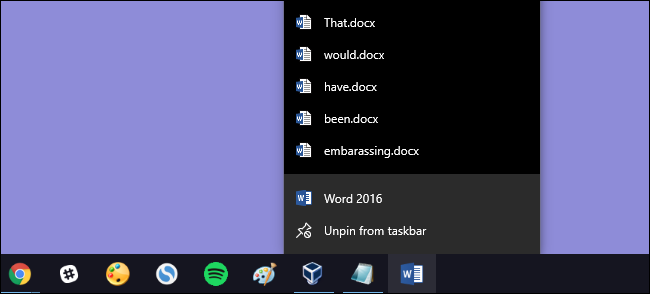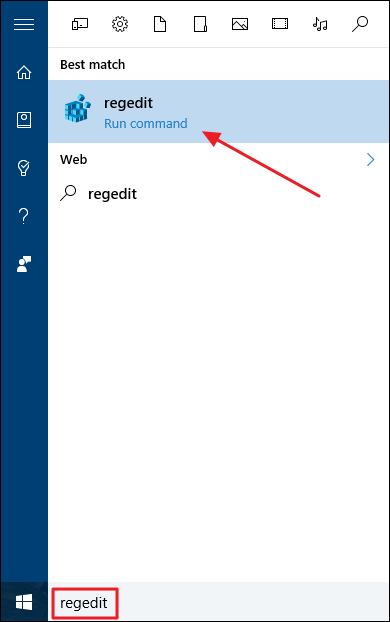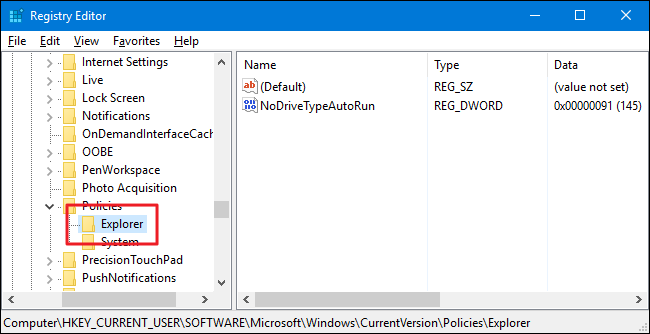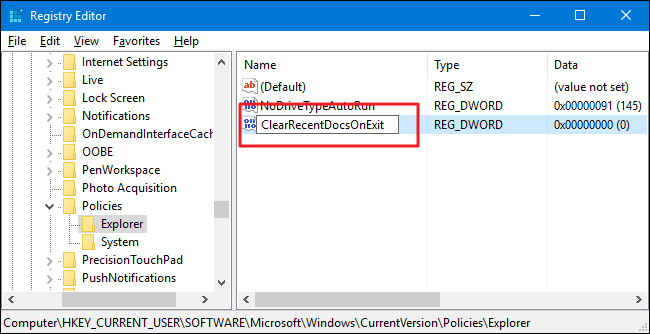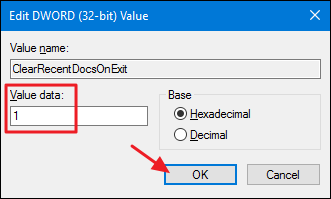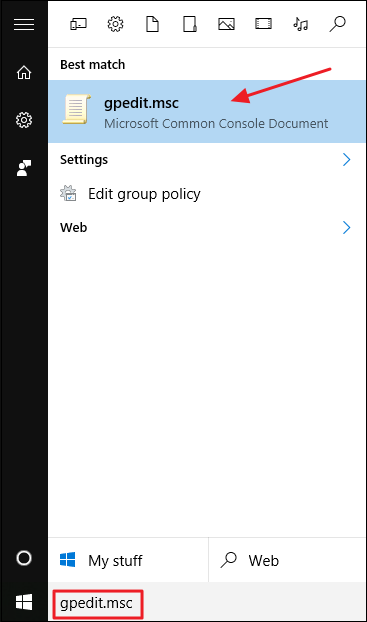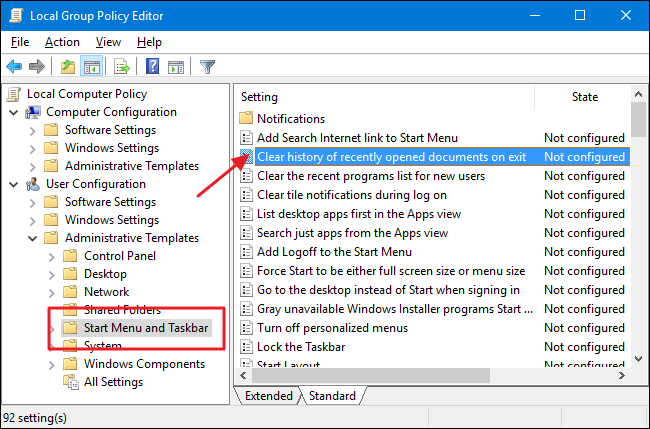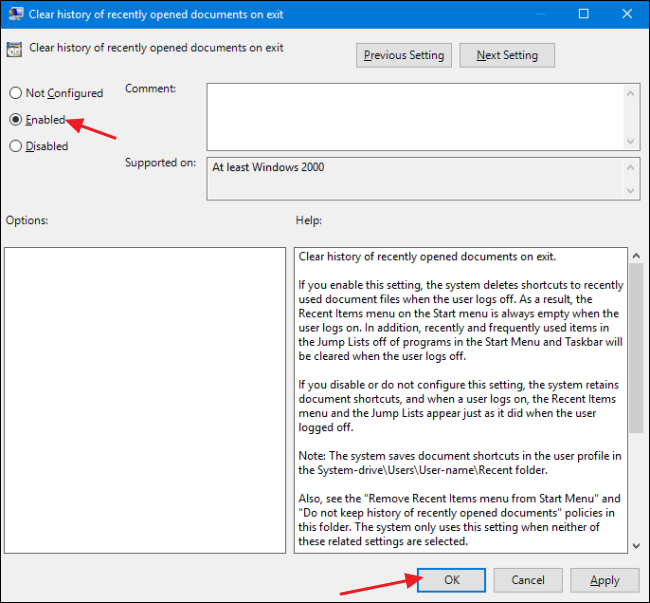Quick Links
You never know when that "Recent Documents" jump list will come back to bite you. Maybe you share your user account with other people, or maybe you're just really cautious. Your reasons are your own. We're just here to show you how to make sure it clears every time you shut down.
With a quick Registry or Group Policy edit, you can have Windows automatically clear the recent documents list every time you exit Windows. That list includes recent files shown in File Explorer, as well as on your apps' jump lists---whether those apps are on the Start menu or pinned to the taskbar. We've talked before about how to turn off recent items in Windows, and even how to clear a single jump list if that's all you need to do. So what's the difference here? The hack we're covering in this article allows you to continue using the recent items list normally up until you exit Windows by restarting or shutting down your PC, or by signing out of your account.
Home Users: Clear the Recent Documents List by Editing the Registry
If you have a Windows Home edition, you will have to edit the Windows Registry to make these changes. You can also do it this way if you have Windows Pro or Enterprise, but feel more comfortable working in the Registry than Group Policy Editor. (If you have Pro or Enterprise, though, we recommend using the easier Group Policy Editor, as described in the next section.)
Standard warning: Registry Editor is a powerful tool and misusing it can render your system unstable or even inoperable. This is a pretty simple hack and as long as you stick to the instructions, you shouldn’t have any problems. That said, if you’ve never worked with it before, consider reading about how to use the Registry Editor before you get started. And definitely back up the Registry (and your computer!) before making changes.
To get started, open the Registry Editor by hitting Start and typing “regedit.” Press Enter to open Registry Editor and give it permission to make changes to your PC.
In the Registry Editor, use the left sidebar to navigate to the following key:
HKEY_CURRENT_USER\SOFTWARE\Microsoft\Windows\CurrentVersion\Policies\Explorer\
Next, you’re going to create a new value in the Explorer key. Right-click the Explorer key and choose New > DWORD (32-bit) Value. Name the new value "ClearRecentDocsOnExit."
Double-click the new ClearRecentDocsOnExit value to open its properties window. Change the value from 0 to 1 in the "Value data" box and then click "OK."
You can now close Registry Editor. The next time you sign out of your user account, or shut down or restart your PC, your recent documents will be cleared. To reverse the change, just follow the same steps and set the ClearRecentDocsOnExit value back to 0.
Download Our One-Click Registry Hack
If you don’t feel like diving into the Registry yourself, we’ve created two downloadable registry hacks you can use. One hack enables the clearing of recent documents when you exit Window and the other hack disables it, restoring the default setting. Both are included in the following ZIP file. Double-click the one you want to use, click through the prompts, and then restart your computer.
These hacks are really just the Explorer key, stripped down to the ClearRecentDocsOnExit value we described above, and then exported to a .REG file. Running the “Enable Clear Recent Documents on Exit” hack creates the ClearRecentDocsOnExit value and also sets that value to 1. Running the “Disable Clear Recent Documents on Exit (Default)” hack deletes the value, restoring the default setting of preserving the recent documents list when you exit Windows. And if you enjoy fiddling with the Registry, it’s worth taking the time to learn how to make your own Registry hacks.
Pro and Enterprise Users: Clear the Recent Document List with the Local Group Policy Editor
If you’re using Windows 10 Pro or Enterprise, the easiest way to clear the recent documents list when you exit Windows is by using the Local Group Policy Editor. It’s a pretty powerful tool, so if you’ve never used it before, it’s worth taking some time to learn what it can do. Also, if you’re on a company network, do everyone a favor and check with your admin first. If your work computer is part of a domain, it’s also likely that it’s part of a domain group policy that will supersede the local group policy, anyway.
In Windows 10 Pro or Enterprise, hit Start, type gpedit.msc, and press Enter.
In the Local Group Policy Editor, in the left-hand pane, drill down to User Configuration > Administrative Templates > Start Menu and Taskbar. On the right, find the “Clear history of recently opened documents on exit” setting and double-click it.
In the properties window that opens, select the Enabled option and then click OK.
You can now exit the Local Group Policy Editor. The next time you exit Windows, your list of recent documents should be cleared. If at any time you want to reverse the change, just follow the same procedure and set the “Clear history of recently opened documents on exit” setting back to Disabled or Not Configured.

